Introduction to SEO-Optimized Website Design and Its Importance
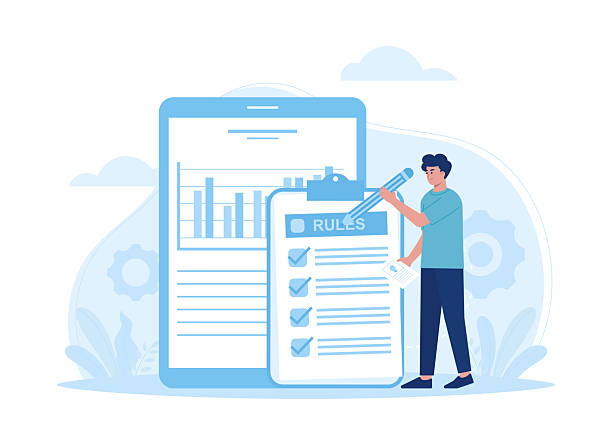
In today’s highly competitive world, an online presence is vital for any business.
But simply having a website is not enough for success in the digital space; your website must be discoverable and able to attract your target audience.
This is precisely where the concept of #Search_Engine_Optimization (SEO) and, consequently, #SEO-Optimized_Website_Design gains immense importance and necessity.
SEO-optimized website design is a comprehensive and fundamental process by which a website, from its initial planning and development stages, is built and optimized to rank much higher in the #ranking results of search engines like Google, Bing, and Yahoo.
This is an #educational and entirely technical approach that not only focuses on visual aspects and user experience but also aligns the technical structure, content, and coding of the site with search engine standards.
The main and ultimate goal of SEO-optimized website design is to maximize your website’s visibility in organic searches.
This increased visibility leads to attracting targeted and high-quality traffic; traffic that is looking for the exact services or products you offer.
Imagine a user searching on Google for “best website design services”; you definitely want your website to be the first thing displayed to them on the Search Engine Results Page (SERP).
Neglecting SEO principles in the early stages of website design and development can lead to costly and time-consuming subsequent corrections and optimizations.
In fact, designing a site with an SEO mindset from the start will be much more efficient, cost-effective, and ultimately more successful.
This intelligent approach ensures that your site is not only appealing to human visitors but also understandable, indexable, and rankable for search engine crawlers.
Without SEO, even the most beautiful and functional websites might get lost among millions of other sites and fail to reach their target audience.
This is where the importance of investing in SEO-optimized website design doubles.
Therefore, a deep understanding of the importance and proper implementation of SEO-optimized website design principles is an undeniable necessity for any modern business seeking sustained success and growth in the online space.
This article provides you with a #comprehensive and clear #explanation in this regard so you can make more informed decisions for your online presence.
According to Wikipedia, SEO includes a set of actions performed to improve a website’s position in natural search results and involves selecting appropriate keywords, technical optimization, and producing valuable content.
This continuous process is the key to achieving top rankings and attracting potential customers.
For more information on SEO, you can refer to reputable articles on websites like Moz.
Are you bothered by losing customers who visit your site to make a purchase?
RasaWeb is your specialized solution for a successful online store.
✅ Significant increase in your online sales
✅ Building trust and professional branding with customers⚡ Get free consultation from RasaWeb specialists!
Basic SEO Principles in Website Design

After understanding its importance, let’s now delve into the basic SEO principles that should be considered in website design.
This section is a #specialized_guide for developers and business owners.
The first step in SEO-optimized website design is to pay attention to Technical SEO.
This includes items such as SEO-friendly URL structures, which should be short, descriptive, and include keywords.
For example, instead of “yoursite.com/?p=123”, use “yoursite.com/website-design-services”.
Next is the correct use of Title Tags and Meta Descriptions.
Although these tags are not directly displayed in the page content, they are very important for search engines and users on the results page.
The title tag should be engaging, unique, and contain the page’s main keyword, while the meta description should provide a persuasive summary of the page’s content.
The site’s Navigation structure should also be simple, logical, and easy to understand.
A hierarchical navigation structure that can be easily traversed by users and Google crawlers significantly helps SEO.
Using an XML Sitemap is also essential; this file helps search engines discover and index all important pages of your website.
The robots.txt file also plays an important role in controlling crawler access to specific parts of the site.
Image optimization using appropriate Alt tags, reducing image file sizes, and using optimized formats like WebP are also important aspects of on-page SEO.
These actions not only help improve SEO ranking but also enhance user experience.
Page loading speed, previously mentioned in the introduction, is also part of technical SEO and directly impacts ranking.
Adhering to these basic principles in the design and development process is the cornerstone of a strong and stable SEO-optimized website.
For a deeper understanding of technical SEO, you can refer to the Google Search Central guides.
These #technical_basic principles are essential for anyone who wants to have a successful website.
This is only part of the comprehensive SEO-optimized website design process that helps us make our website more accessible to search engines.
Keyword Research and Its Role in Site Architecture
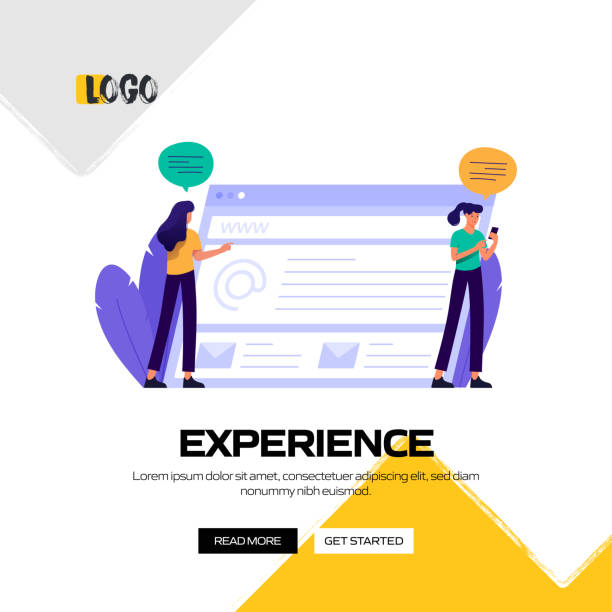
Keyword research is the backbone of any successful SEO strategy and a fundamental step in the SEO-optimized website design process.
This stage requires a deep #analytical approach to find phrases that users actually search for to find our products or services.
Keywords are the bridge between your content and searchers’ needs.
Without a proper understanding of these words, even the best website design cannot attract the desired traffic.
The keyword research process involves identifying main keywords, Long-Tail Keywords, and keywords related to Search Intent.
Tools like Google Keyword Planner, Ahrefs, Semrush, and Ubersuggest can be very helpful in this stage.
After compiling a list of relevant keywords, we need to categorize them based on search volume, competition, and their relevance to the site’s content.
The role of keyword research in site architecture is crucial.
Your site’s structure should reflect how users think and the hierarchy of keywords.
For example, main keywords are usually assigned to Category Pages or main pages, while longer and more specific keywords are assigned to product pages or blog articles.
This logical organization not only helps search engines understand the topic of each page but also improves user navigation.
A strong and logical site architecture built on keyword research effectively distributes page authority and helps search engine crawlers correctly index all important pages of the site.
This section is a #specialized stage that requires meticulous attention and directly impacts the future success of SEO-optimized website design.
The table below shows the differences between keyword types that are crucial in this process:
| Keyword Type | Description | Example |
|---|---|---|
| Short-tail Keywords | Short and very general phrases with high search volume and high competition. | “Website Design” “Shoes” |
| Mid-tail Keywords | Slightly longer and more specific phrases with medium search volume. | “Responsive Website Design” “Men’s Sports Shoes” |
| Long-tail Keywords | Very specific and long phrases with lower search volume but high intent and less competition. | “Learn SEO-Optimized Website Design with WordPress” “Best Sports Shoes for Mountain Running” |
Keyword research also helps identify new opportunities for content creation.
By discovering words and phrases that competitors have overlooked or paid less attention to, you can solidify your position in specific niches.
This is the foundation for creating valuable and targeted content, which we will discuss in later chapters.
From a strategic perspective, this stage of SEO-optimized website design is considered one of the most important phases as it determines the overall direction of future SEO activities.
For further reading on keyword research, you can refer to reputable resources such as Backlinko.
Optimizing User Experience (UX) and Its Connection to SEO
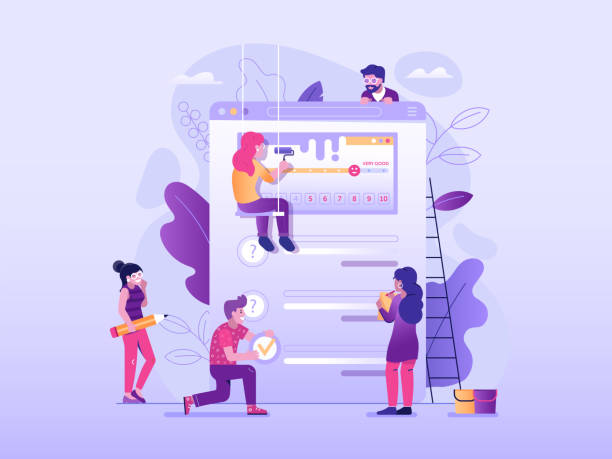
User Experience (UX) and Search Engine Optimization (SEO) are two sides of the same coin that together contribute to a website’s success in search results.
In the past, it might have been thought that SEO was limited to technical discussions and keywords, but today it has become clear that a strong and positive user experience plays a vital role in website ranking.
This section provides a comprehensive #explanation of the close relationship between UX and SEO.
Google and other search engines are increasingly paying attention to user experience signals such as Bounce Rate, Dwell Time, and Pages Per Session.
If users quickly leave your site or spend little time on it, this sends a negative signal to the search engine that your site does not offer quality content or an engaging experience.
As a result, your ranking in search results will decrease.
Therefore, in the SEO-optimized website design process, improving user experience should be seen as a priority.
One of the most important aspects of UX that directly affects SEO is the Responsiveness of the website.
Given the increasing use of mobile phones for internet searches, having a website that displays well on all devices (computers, tablets, mobile phones) is of high importance.
Google has explicitly stated that it prefers mobile-friendly websites in its ranking and has further emphasized the importance of on-page user experience with the introduction of Core Web Vitals.
Intuitive User Interface (UI) design, easy navigation, readable fonts, appropriate use of white space, and clear Calls-to-Action all contribute to improving UX and consequently SEO.
This is a practical #guide for any design.
Reducing complexity and confusion for the user will make them stay longer on your site and visit more pages.
These positive signals show search engines that your site has valuable content and will improve its ranking.
Ultimately, a true SEO-optimized website design doesn’t just think about search engines; it places users at its center.
Optimizing for the user means optimizing for the search engine.
To learn more about the connection between UX and SEO, you can refer to articles published by the Nielsen Norman Group, which are a reference in the field of user experience.
Did you know that 94% of users’ first impressions of a business are related to its website design? With professional corporate website design by **RasaWeb**, turn this first impression into an opportunity for growth.
✅ Attract more customers and increase sales
✅ Build credibility and trust in the audience’s eyes⚡ Get a free website design consultation!
Page Load Speed and Site Security from an SEO Perspective
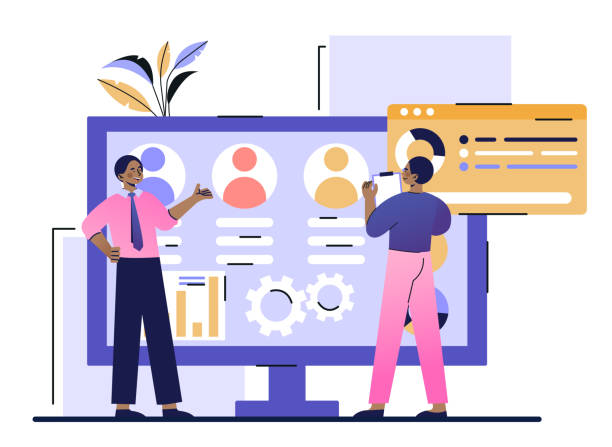
Page load speed and security are two #critical_technical factors that directly impact user experience and SEO ranking.
In the SEO-optimized website design process, neglecting these two factors can nullify your other SEO efforts.
No user is willing to wait a long time for a web page to load; research has shown that users tend to leave sites that take more than 3 seconds to load.
This high bounce rate sends a negative signal to search engines and leads to a decrease in your ranking.
Google, by introducing Core Web Vitals (including Largest Contentful Paint (LCP), First Input Delay (FID), and Cumulative Layout Shift (CLS)), has officially stated that page speed and visual stability are important ranking factors.
Several actions can be taken to improve loading speed.
These actions include image optimization (reducing size without compromising quality), compressing CSS and JavaScript files, using Caching, and choosing a high-quality, fast hosting provider.
Using a CDN (Content Delivery Network) can also help distribute content from the closest server to the user, significantly increasing loading speed.
The second part, site security, is currently considered a direct ranking factor for Google.
The use of HTTPS (Hypertext Transfer Protocol Secure) protocol, activated with an SSL/TLS certificate, is of high importance.
HTTPS encrypts information exchanged between the user and the server, preventing cyberattacks and data manipulation.
Websites that use HTTPS are not only safer for users but also have higher priority in search results.
This is an important #educational point for any web developer.
Having a secure and fast website not only helps improve SEO ranking but also builds user trust and provides a positive user experience.
In fact, these two factors are among the most fundamental parts of a professional SEO-optimized website design that should be considered from the very beginning.
To check your site’s speed, you can use tools like Google PageSpeed Insights.
Security is also something Cloudflare has explained in detail.
Ignoring any of these can lead to irreparable costs for your online presence.
The Role of Content in SEO and Attracting Organic Traffic

Content is king; this phrase holds truer than ever in the world of SEO.
In fact, without quality and relevant content, all technical and foundational efforts in SEO-optimized website design will be ineffective.
Your content is what attracts users, meets their needs, and encourages them to interact more with the site.
Producing valuable content is the key to attracting organic traffic and improving site ranking.
Good content should be comprehensive, accurate, unique, and engaging for your target audience.
This includes blog articles, service or product pages, videos, infographics, and any other form of information you provide on your site.
Each piece of content should be optimized around a main keyword and related keywords, but not in a way that affects readability and naturalness of the text.
This process is called Keyword Density, which should be naturally and organically distributed throughout the text.
One effective approach is to create Topic Clusters.
Instead of creating separate pages for each keyword, you create a comprehensive Pillar Page on a broad topic and then link several more detailed blog articles (Cluster Content) to it.
This structure helps search engines better understand your expertise in a specific area.
Furthermore, content should be diverse; sometimes a #thought-provoking content that makes the audience think can significantly increase engagement.
Using visual elements such as images, videos, and charts can also make your content more engaging and #entertaining and help retain users on the page.
Content length is also important; longer and more comprehensive content typically ranks higher, but more important than length is the quality and depth of the material.
Optimizing headings (H1, H2, H3) and paragraphs for readability and keyword inclusion are other important aspects of content SEO.
Remember that the ultimate goal of content creation within an SEO-optimized website design is to provide value to the user.
If your content solves users’ problems, answers their questions, or provides useful information, both users and search engines will reward it.
Producing quality content is an ongoing process and should be regularly updated and improved to always remain relevant and fresh.
Internal and External Linking to Increase Site Authority
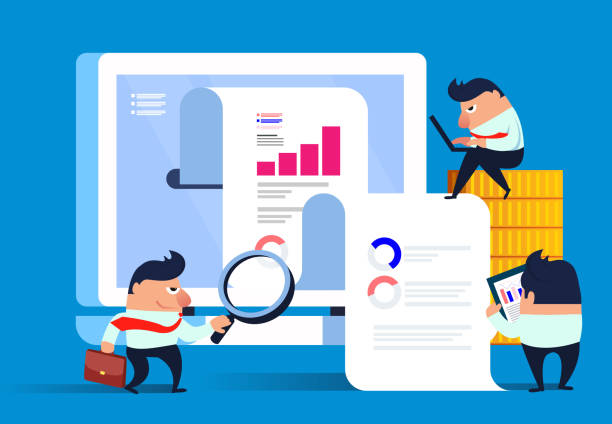
Linking, both internal and external, is a key component of SEO strategy and plays a vital role in a website’s credibility and ranking.
This process shows search engines how credible and relevant your website is.
This section provides a #guide for understanding and implementing proper linking strategies in SEO-optimized website design.
Internal Linking means creating links between different pages of a website.
This helps search engines better understand your site’s structure, discover new pages, and identify the topical importance of different pages.
Additionally, internal links help distribute “Link Juice” or page authority throughout the site.
Using relevant and descriptive Anchor Text for internal links is very important.
For example, if you have an article about “best smartphones,” you can use the phrase “best smartphones” to link to the relevant page in your store.
External Linking (or Backlinking) means receiving links from other websites to your site.
Backlinks are considered a vote of confidence for your website and indicate your site’s credibility and Authority (Domain Authority).
The more numerous and higher the quality of backlinks, the more Google recognizes your site as authoritative.
However, not all backlinks are equal; a backlink from a reputable site relevant to your industry is much more valuable.
There are various ways to acquire quality backlinks, including creating excellent content that others will link to (Link Bait), Guest Posting on reputable blogs, and connecting with influencers.
Buying links or participating in Link Farms, which are against Google’s guidelines, should be strictly avoided.
This is an important #analytical insight.
Search engines use complex algorithms to evaluate link quality.
| Link Building Type | Advantages | Key Points |
|---|---|---|
| Internal Linking | Improved site navigation, credit distribution, assistance with indexing. | Use of relevant anchor text, linking to important pages. |
| External Linking (Backlink) | Increased domain authority, improved SERP ranking, attraction of referral traffic. | Focus on quality not quantity, avoidance of spam links, from relevant sites. |
Maintaining a natural and diverse link profile is an integral part of SEO-optimized website design.
Tools like Ahrefs and Semrush can help you monitor backlinks and find new opportunities.
For a deeper understanding of link building, studying Backlinko’s comprehensive guide in this area is recommended.
Using SEO Tools and Performance Monitoring

After implementing SEO-optimized website design principles, the phase of monitoring and analyzing performance begins to ensure the effectiveness of strategies.
This stage is crucial for identifying strengths and weaknesses and making necessary optimizations.
Fortunately, powerful SEO tools exist that provide valuable information.
This is an important #educational section.
Google Analytics is one of the most fundamental tools that every website should use.
This free tool provides comprehensive information about your website traffic, including the number of visitors, time spent on site, bounce rate, traffic sources (organic search, social media, referral, etc.), and user behavior on the site.
By analyzing this data, you can gain a better understanding of how users interact with your content and improve your SEO strategies.
Another vital tool is Google Search Console.
This tool allows you to monitor your site’s performance in Google search results.
You can see the keywords users searched for to find your site, the number of clicks and impressions, and the Click-Through Rate (CTR).
Search Console also reports Crawl Errors, indexing issues, and security problems.
This is a direct #news source from Google itself regarding the SEO health of your site.
Paid and more advanced tools like Ahrefs and Semrush also offer much broader capabilities.
These tools allow you to analyze competitor performance, discover new keywords, examine your and competitors’ backlink profiles, and identify opportunities for SEO improvement.
This continuous monitoring helps you always stay on the right SEO path.
For example, by observing a high bounce rate on a specific page in Google Analytics, you can review that page’s content or improve its user experience.
Or, by seeing a sudden drop in ranking for a keyword in Search Console, you can quickly investigate and rectify the cause.
This continuous process of monitoring and improvement ensures the maintenance and enhancement of your ranking in search results and is an inseparable part of a successful SEO-optimized website design.
To get started with these tools, you can refer to Google Analytics guide and Search Console guide.
Is your current e-commerce website design not generating the sales you expect?
RasaWeb specializes in professional e-commerce website design!
✅ An attractive and user-friendly site aimed at increasing sales
✅ High speed and security for an ideal shopping experience⚡ Get a free online store design consultation with RasaWeb!
Google Algorithm Updates and Their Impact on Website Design
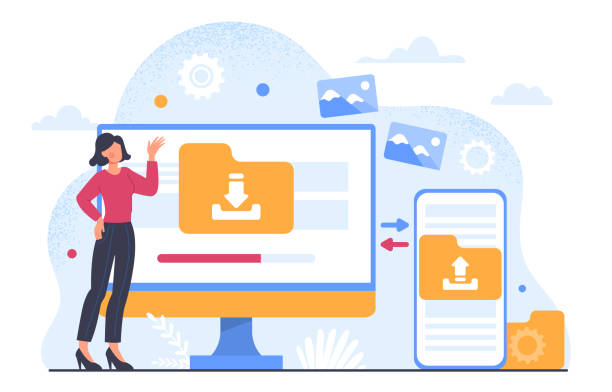
The world of SEO is not static, and search engines, especially Google, constantly update their algorithms.
These updates can have significant impacts on website rankings, so awareness of them and adapting to changes is essential for maintaining the success of an SEO-optimized website design.
This section provides a #news and #analytical view on the impact of these updates.
Google releases hundreds of minor updates and several major and broad updates (Core Updates) annually.
These updates are designed to improve the quality of search results and provide the best answers to user queries.
For example, updates like Panda (content quality), Penguin (backlink quality), Hummingbird (understanding search intent), RankBrain (AI in understanding search), and Core Web Vitals updates (user experience and site speed) have had widespread impacts on SEO.
Each time a major update is released, websites may experience fluctuations in their rankings.
These fluctuations can be due to changes in the weighting of different ranking factors or the discovery of new spam patterns.
For site owners and SEO professionals, it is important to monitor changes and, if necessary, adapt their strategies.
This means continuous monitoring of site performance, studying analyses and reports from prominent SEOs, and understanding Google’s overall approach to quality and relevance.
Google’s overall approach has always been focused on providing the best possible user experience and removing low-quality or spam content from search results.
Therefore, in the long term, websites that focus on content quality, excellent user experience, and genuine authority are less negatively affected by updates and may even benefit from them.
Continuous content optimization, improving site speed, ensuring site security and correct structure, are all actions that make your website resilient to algorithm fluctuations.
Ultimately, a successful SEO-optimized website design not only performs well in the present but is also flexible and ready for future changes.
Following reputable websites like Search Engine Land and Search Engine Roundtable for the latest news on Google algorithms is recommended.
These updates prove that SEO is not a static process but requires continuous attention and updates.
The Future of SEO-Optimized Website Design and Upcoming Trends
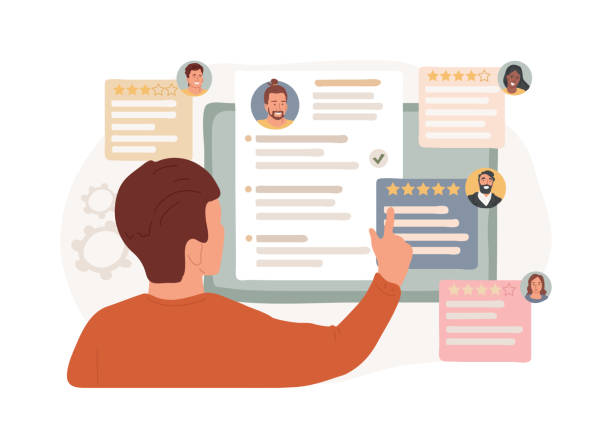
The future of SEO-optimized website design promises exciting changes and advancements that businesses and SEO professionals must prepare for.
This chapter discusses some of the upcoming trends and future challenges in this field that can provide you with #thought-provoking and, indeed, helpful #content.
One of the most important trends is Voice Search.
With the proliferation of smart home devices and voice assistants like Google Assistant and Siri, users are increasingly searching through voice commands.
This requires a change in how keywords are optimized; longer and more conversational keywords gain more importance.
Your content should be designed to answer direct user questions, as voice search results typically provide a direct and brief answer.
Artificial Intelligence (AI) also plays an increasing role in SEO.
Google algorithms like BERT and MUM show that search engines have become much more sophisticated in understanding natural language and the intent behind searches (Search Intent).
This means that producing highly relevant, in-depth, and quality content that comprehensively answers user questions is more vital than ever.
The emphasis on E-A-T principles (Expertise, Authoritativeness, Trustworthiness) will also continue.
Google is looking for websites that demonstrate expertise, authority, and trustworthiness, especially in areas related to health, finance, and security (Your Money or Your Life – YMYL); this is an important #technical aspect.
Therefore, demonstrating the competence of authors, providing reliable sources, and having a secure and transparent website are of high importance.
Headless CMS and Progressive Web Apps (PWAs) are also growing, creating new challenges and opportunities for technical SEO.
These technologies can significantly improve speed and user experience.
Ultimately, SEO will become more than ever a comprehensive and user-centric approach.
Future SEO-optimized website design will not only focus on search engines but will increasingly concentrate on providing the best possible user experience, regardless of how or what device they use to search.
Staying at the top of the competition requires continuous learning, experimentation, and adaptation to changes.
This is a future where SEO transforms into an art and science combining user experience, valuable content, and advanced technology.
For more information on SEO trends, you can refer to annual reports from reputable sources like BrightEdge.
Frequently Asked Questions
| Question | Answer |
|---|---|
| What is SEO-optimized website design? | Designing a website that is optimized for both users and search engines to achieve higher rankings. This includes adhering to technical, content, and user experience principles. |
| Why is SEO important in website design? | The importance of SEO in website design is that it increases site visibility in search results, attracts organic traffic, improves user experience, and boosts user credibility and trust. |
| What are the most important elements of SEO-friendly website design? | Responsiveness (mobile-friendliness), high loading speed, clear navigation structure, proper use of heading tags (H1-H6), image optimization, and quality content. |
| What is the impact of responsiveness (mobile-friendliness) on SEO? | Google uses mobile-first indexing, meaning it prioritizes the mobile version of websites for ranking. Therefore, responsiveness is crucial for SEO. |
| What is the role of site speed in SEO? | Faster websites provide a better user experience, reduce bounce rates, and are favored by search engines. Site speed is one of Google’s ranking factors. |
| How to optimize images for SEO? | By compressing image sizes, using descriptive and relevant file names, and most importantly, writing appropriate and content/keyword-relevant Alt Text. |
| What is the importance of content in SEO-driven design? | High-quality, relevant, and keyword-rich content is vital for attracting and engaging users, as well as for ranking in search engines. Content is the king of SEO. |
| How does URL structure affect SEO? | Clean, descriptive, short URLs containing keywords help users and search engines better understand the page content and appear in search results. |
| What is Schema Markup and what is its role in SEO? | Schema Markup is structured data that helps search engines better understand site content and display it as Rich Snippets in search results, which increases Click-Through Rate (CTR). |
| Should SEO be considered from the beginning of website design? | Yes, it is highly recommended. Integrating SEO principles from the initial phase of website design saves time and cost and leads to better and more sustainable long-term results. |
And other services of RasaWeb Advertising Agency in the field of advertising
Smart Marketing Automation: An effective tool for digital branding with the help of real data.
Smart Digital Branding: A professional solution for analyzing customer behavior with a focus on SEO-driven content strategy.
Smart Website Development: An innovative platform to improve sales growth with intelligent data analysis.
Smart Advertising Campaign: Transform click-through rates with user experience customization.
Smart Customer Journey Map: A dedicated service for increasing website traffic growth based on intelligent data analysis.
And over a hundred other services in the field of internet advertising, advertising consultation, and organizational solutions.
Internet Advertising | Advertising Strategy | Advertorial
Resources
- Professional Website Design with SEO
- SEO-Optimized Website Design
- Professional Site SEO
- Online Business Success
? Lead your business to digital success with RasaWeb Digital Marketing Agency. From custom website design to SEO optimization and advertising campaign management, we are with you every step of the way to ensure a powerful and impactful online presence. Contact us for consultation and to start your business’s digital transformation.
📍 Tehran, Mirdamad St., Next to Central Bank, Kazeroon Southern Alley, Ramin Alley No. 6



